10 Abnormal Chicken Eggs & What You Need To Know!
So...I have to ADD my own experience of something weird inside of MY chicken egg. Last night I was cooking eggs for dinner, cracked three into the pan, the fourth had a strange oblong dark brown "thing" inside of the egg white, not the yoke. In hindsight I should have taken a photo of it in the pan. The egg was fine, I dished out this "thing" and finished cooking my eggs. When I examining it later...I am totally puzzled! It is rock hard, looks and feels like a small heavy rock but smooth surface, almost like a piece of iron. The hen has only been laying for a month. I have yet to find anything that describes it in my searching. I will post a photo on my facebook group. Anice
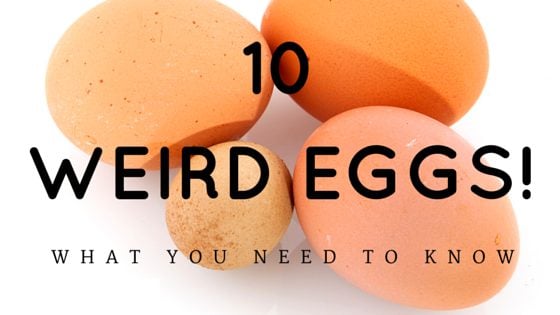
Abnormal chicken eggs: If you own chickens, it’s just a matter of time before you get one that makes you scratch your head and wonder “What the heck?”
Don’t worry. Usually, abnormal eggs just happen, and although they can mean your chicken is sick or stressed, they aren’t necessarily something to be concerned about.
(New to chicken keeping? Grab my bestselling book Chickens: Naturally Raising A Sustainable Flock for less than the price of takeout here!)
Your chicken is a live animal, and sometimes, just like humans, things go awry without explanation.
There’s a few abnormal eggs you’ll likely run into regularly, while others are uncommon (although clearly not unheard of).
If you’d rather learn about abnormal chicken eggs by listening, you can download my podcast about it here:
It’s important not to get too concerned about abnormal chicken eggs – while they can indicate a problem, your best bet is to watch your flock for signs of stress or illness, and remember that sometimes abnormal chicken eggs just happen.
With a couple of exceptions, abnormal chicken eggs are still okay to eat (and I tell you which ones aren’t!).
1. Soft Shell/No Shell Eggs
It can be unnerving (and kind of cool) the first time you see chicken eggs without their shell. The eggs can be missing the whole shell or just part of it, but the membrane is still intact.Adding the shell is one of the last steps a chicken takes to produce eggs, and sometimes, for a variety of reasons, that step is skipped.
In pullets, soft shell eggs sometimes happen with her first egg – the pullet’s system just hasn’t kick started correctly, but it will soon catch up.
Sometimes the cause is insufficient calcium, which can happen with a chicken who’s been eating a grower ration that’s lower in calcium than a layer feed.
In established layers, there’s a few reasons for abnormal soft shell eggs, including insufficient calcium or protein absorbed, inflammation of the oviduct, or heat stress. Hens also coming back into laying can lay abnormal soft shell eggs.
Another reason is if the previous egg stayed too long in your chicken’s shell gland, causing the soft shell egg to be laid too soon.
Can you eat it?
If the soft shell chicken eggs remain unbroken until I find them, I usually feed them to the pigs or throw them on the compost pile.
Although they might be okay, I’m personally not comfortable eating them because I don’t know what kind of nasties have passed through the membrane.
2. Lash Eggs
Among the most disturbing of abnormal chicken eggs to see is a lash egg.
Lash eggs aren’t actually eggs, but rather the result of an infection called Salpingitis – an infection and inflammation of the oviduct. Lash eggs are generally shaped like eggs, since they still travel through the oviduct.
Lash eggs are the accumulation of pus, egg material, and possibly tissue laid by the hen. It can be soft or hard, and is comprised of layers of the shed material.
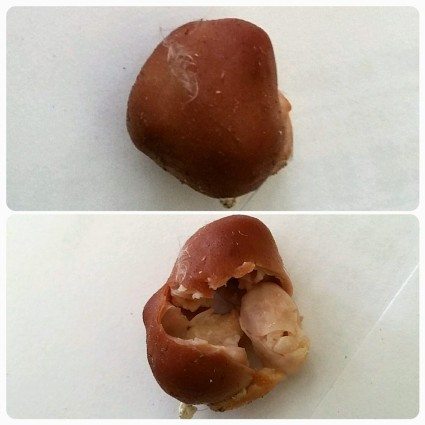
While some chicken keepers ring the death knell if they have a chicken that lays abnormal eggs like lash eggs, the bottom line is it’s an infection – consult your vet to see if it can be treated.
Can you eat it?
You’d be crazy to eat a lash egg.
3. Incomplete pigmentation
“I forgot to change the toner cartridge” is a common joke when a chicken owner comes across an egg that’s not uniformly colored.
Eggs not uniformly colored are normal eggs that just have a funny pigmentation that day – it’s a minor flaw.
Abnormal chicken eggs like this is are usually caused by some sort of stress, such as heat stress. The hen is working overtime to keep her body cool – which means she has less energy to put into making eggs.
Poor nutrition or a viral infection are other potential causes.
Can you eat it?
I’ve never had an issue eating chicken eggs with incomplete pigmentation.
4. Bumps on eggs
Bumps on your chicken eggs are calcium deposits – they can range from minor to large deposits, and they’re generally white.
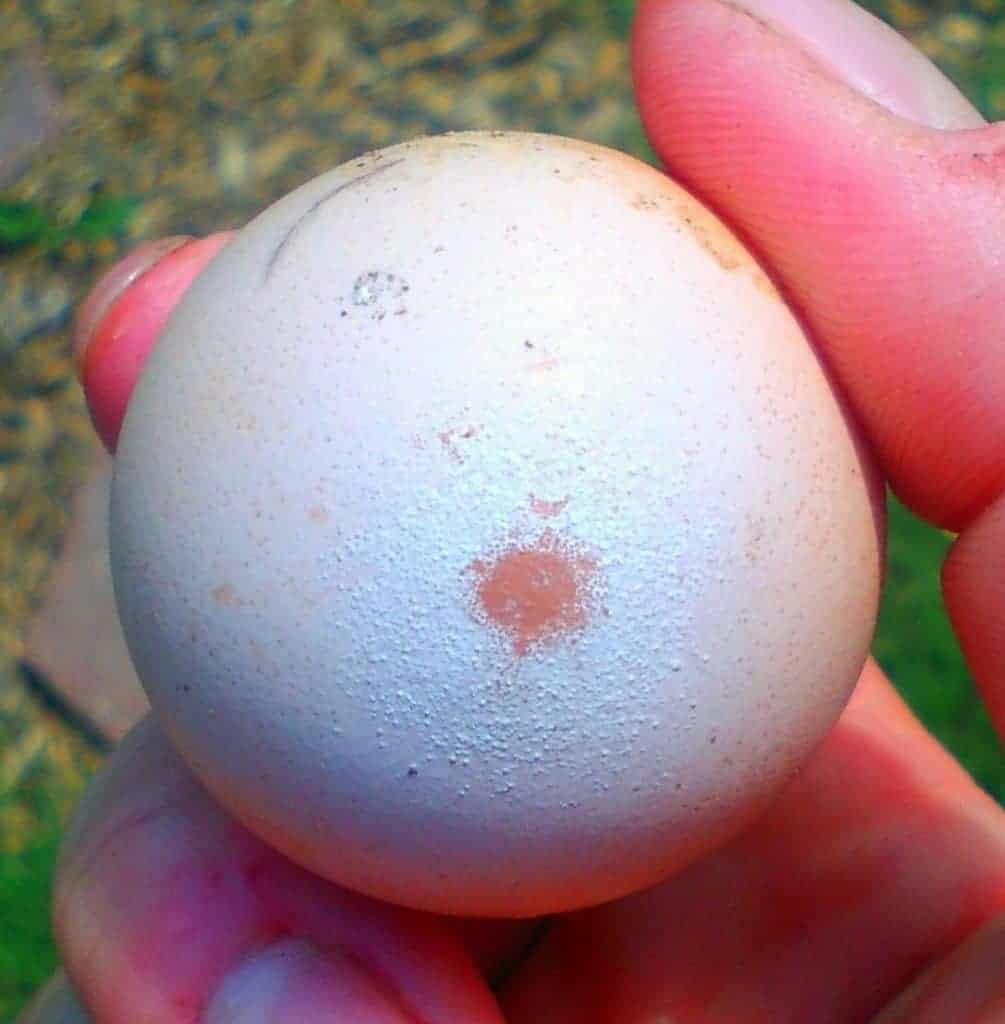
The most common cause is excess calcium in your hen’s diet – check to see if she’s somehow getting too much calcium.
Other causes are defective shell glands or stress during the calcification process.
Can you eat it?
I’ve eaten these eggs without any issues.
5. Very Small Eggs
Lovingly referred to as fart eggs, rooster eggs or fairy eggs, very small eggs typically are missing the yolk. They’re cute to find, but don’t yield very much in the way of food.
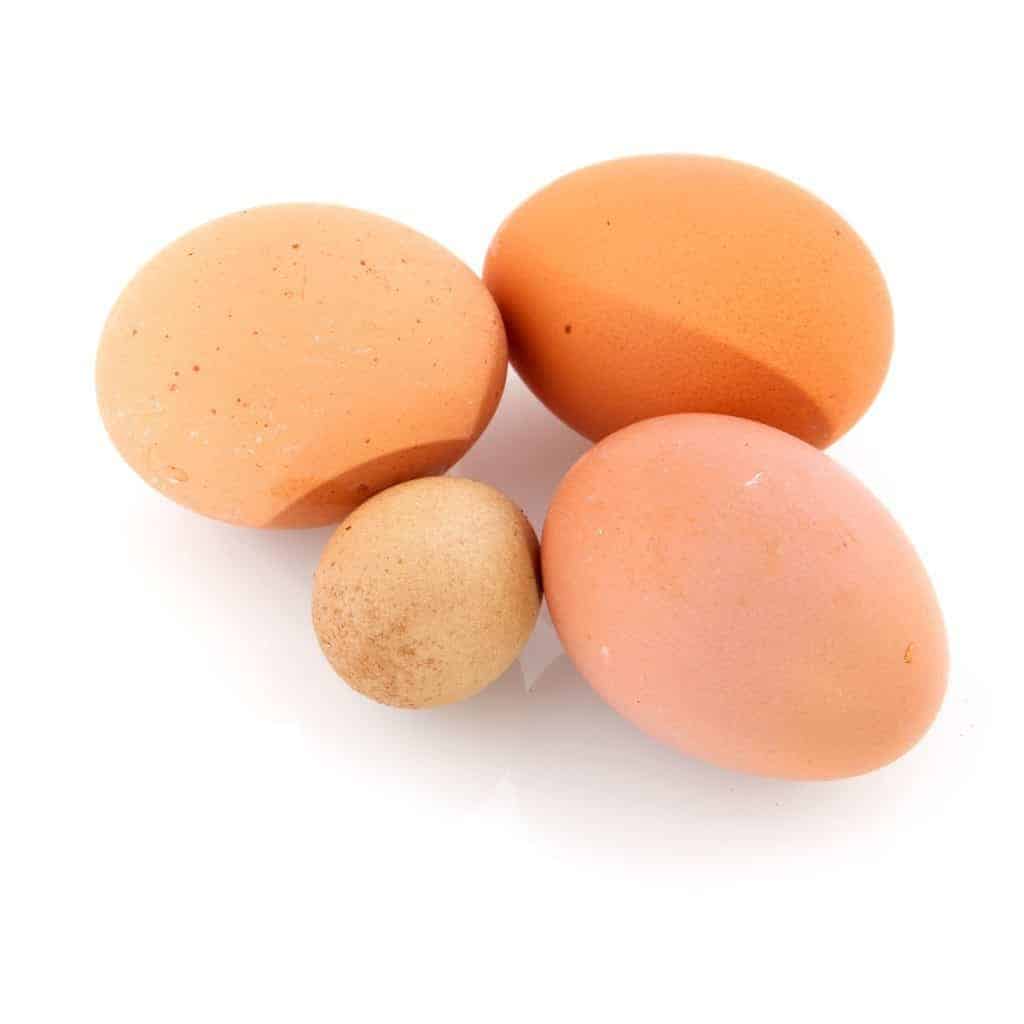
Young pullets might produce fairy eggs when they first start laying – their reproductive system is just trying to catch up.
I’ve also had hens lay fairy eggs when under stress, notably with one hen that had been savaged by a rooster.
Her reproductive cycle might have been disturbed by the stress, or her body might not have been able to produce a real egg because it was putting its energy into healing her body.
Fairy eggs can also be laid when a foreign mass (such as a piece of tissue) triggers the hen’s system to produce an egg.
Can you eat it?
I’ve never had a problem eating fairy eggs.
6. Double Yolkers
Double yolkers are always exciting abnormal chicken eggs to find – they will have two yolks in one egg.
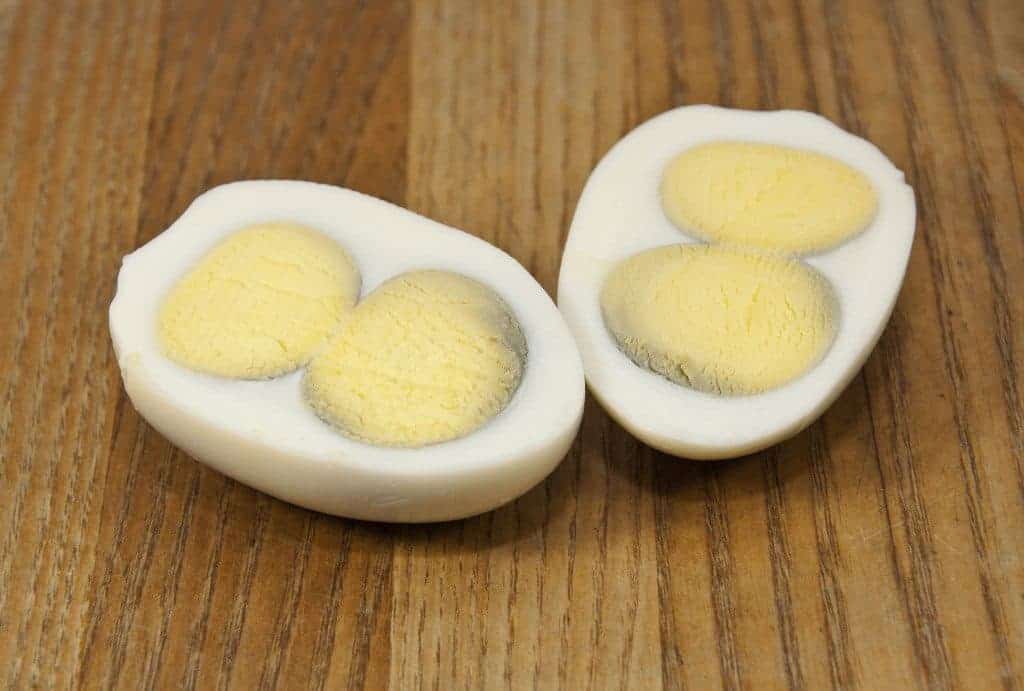
Double yolks happen when the hen releases two eggs into the oviduct, and both of those eggs are included in shell.
Double yolk eggs generally are larger which can be a cause for concern if it’s too large for your hen to pass – causing her to become egg bound or suffer a vent prolapse.
Although they put stress on a hen’s body, double yolks are becoming so desirable that industrial farmers have bred hens that will only produce double yolked eggs in Europe.
Generally speaking, there’s nothing wrong with a chicken that lays double yolked eggs – it’s just abnormal.
You can incubate it, and there are stories of twin chicks successfully hatching, although it’s rare.
Can you eat it?
People eat double yolked eggs daily.
7. White banded eggs
White banded eggs occur when two eggs enter the oviduct, thereby making contact with each other in the shell gland pouch.When the hen is forming the shell of the first egg, the normal calcification process is interrupted, so it gets an extra layer of calcium – which is the white band marking.
Causes for abnormal chicken eggs such as white banded eggs can be something simple, such as flock stress or something more serious such as an infection.
Like always, your best bet is to watch your flock for abnormal behavior.
Can you eat it?
I’ve never had a problem eating white banded eggs.
8. Egg inside an egg
The fancy name for an egg inside an egg is counter-peristalsis contraction, but in every day terms, they’re eggs that somehow found themselves inside another egg.It’s not common, but it does happen.
It occurs when a hen releases a second egg into the oviduct before the first egg has completed the laying process. This causes the first egg to reverse in the oviduct, which is then added to the second egg.
The two then have a second albumen and shell form encasing both eggs.
You can see an egg inside an egg here:
Can you eat it?
Although I’ve not personally dealt with eggs inside eggs, I’ve read reports that they’re perfectly fine to eat.
9. Speckled Eggs
Speckled eggs are pretty normal, as far as abnormal chicken eggs go. They look pretty, and it’s wonderful how unique eggs can be.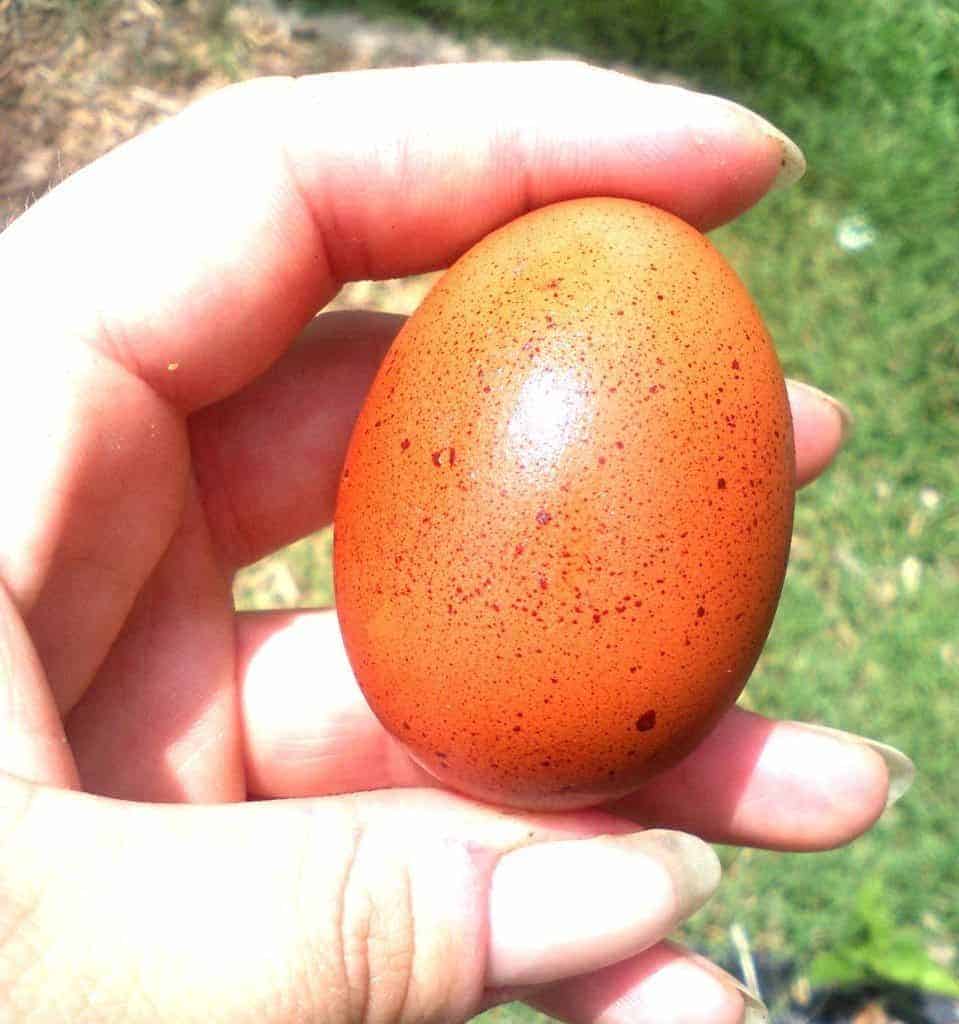
The speckles are actually extra calcium deposits, and are formed when the calcification process is disturbed or there’s a defective shell gland.
They can also be caused by an excess of calcium.
Although technically abnormal eggs, National Geographic studied eggs, and found that speckled eggs might be a way to make shells stronger – so your chicken might be on to something.
Can you eat it?
I’ve never had a problem eating a speckled egg – they just look abnormal.
10. Odd shaped eggs
Odd shaped eggs are pretty self explanatory – they’re abnormal chicken eggs that aren’t uniformly shaped all the way around.
Odd shaped eggs can occur if there’s some sort of abnormal disturbance in the egg forming process, or if your chicken experiences some sort of stress such as over crowding. Age also makes a difference – it can occur in very old or very young hens.
In rare cases, respiratory diseases can cause abnormal eggs. I had a reader tell me her hen always lays odd shaped eggs – in this case, I would venture to say that since the hen lays consistently, it’s likely a structural issue internally.
Can you eat it?
I’ve not personally had any issues eating abnormal shaped chicken eggs.
While this list of isn’t comprehensive, I’ve touched on the 10 most common occurrences of abnormal chicken eggs. Hopefully you find it useful!